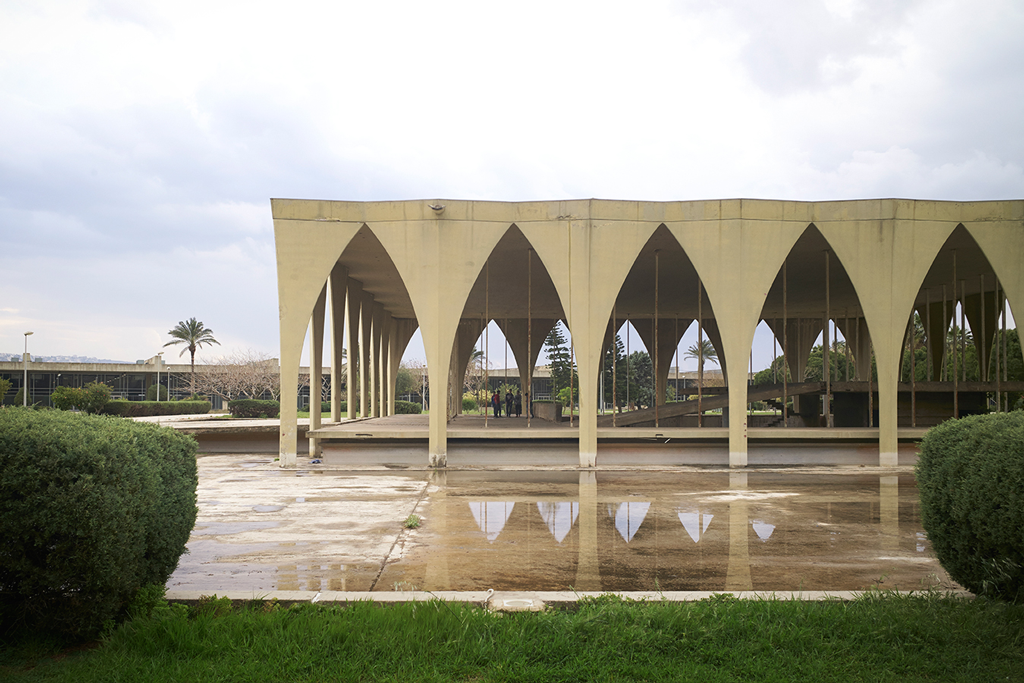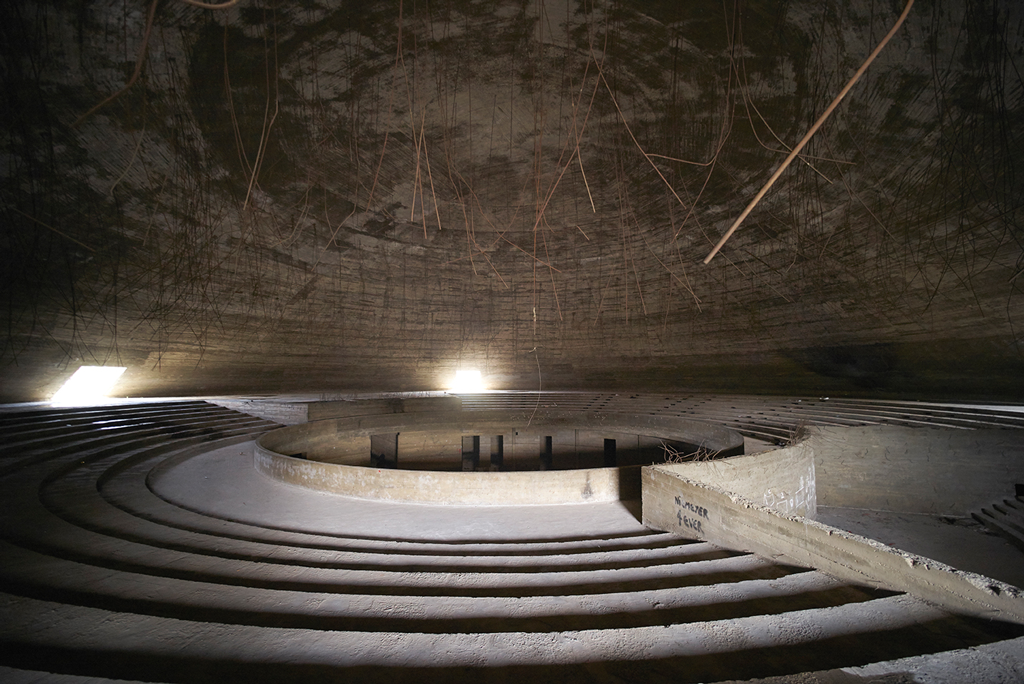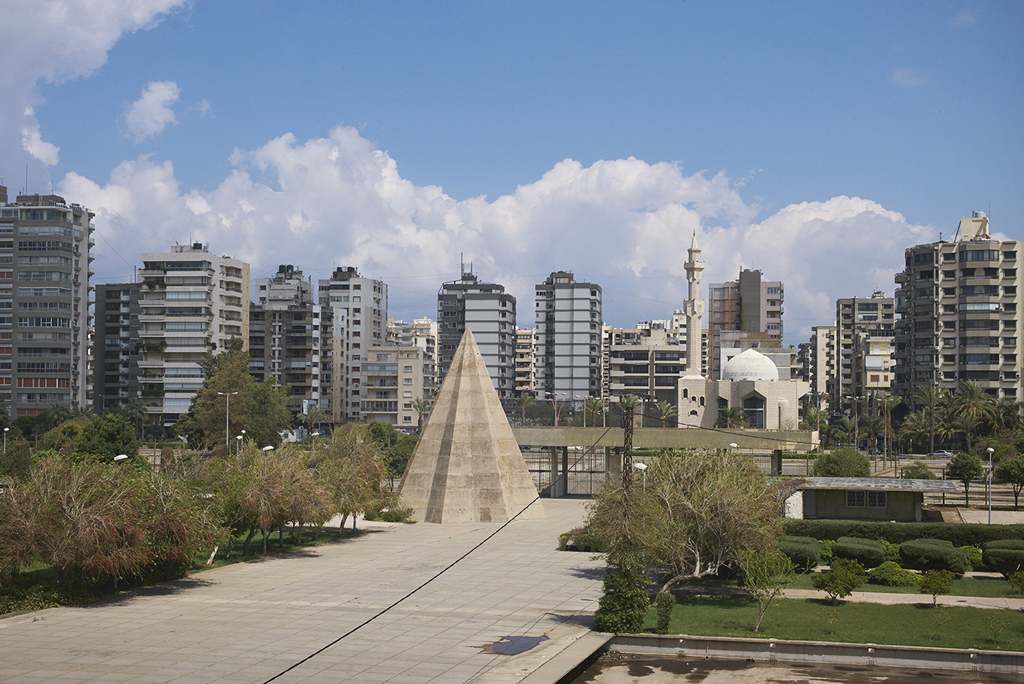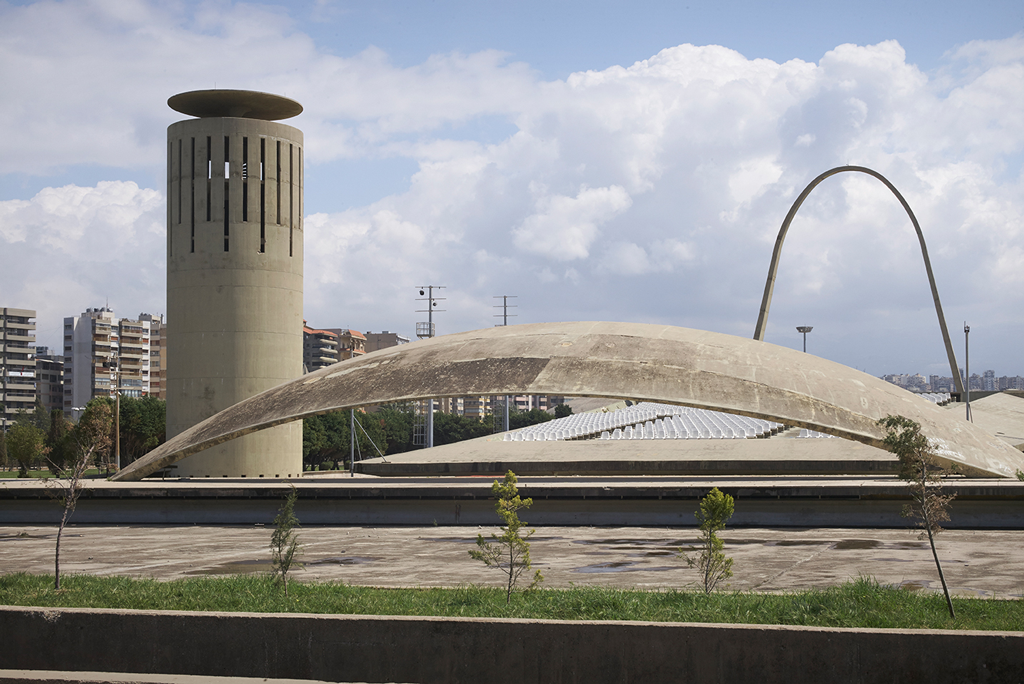Jean-Marc Bonfils, the power of empty space

On the occasion of a report by the photographer Julien Lanoo at the Rachid Karamé International Fair in Tripoli – conceived in 1963 by Oscar Niemeyer –, the journalist Joana Lazarova meets the architect Jean-Marc Bonfils based in Beirut. Her goal is to understand the unusual history of this 75-hectare site whose works began in 1967 before being abandoned during the Civil War in 1975. Served as an army base during the Syrian occupation in the late 1980s, pavilions are now used for meetings or concerts but most often remain empty.
Find the pictures by Julien Lanoo, with the text of Joana Lazarova, in the « Retour » section of the issue No.417 of AA. Jean-Marc Bonfils relates, in 6 acts, an architectural adventure that changed the face of Tripoli.
Part 1
Oscar Niemeyer arrived in Beirut in 1962. He was the prestigious architect of the new capital Brasília. He was 55 years old. He didn’t know Lebanon. A few years earlier, in 1958, Fouad Chehab had been elected President of the Lebanese Republic. He wants to stabilise the country and rebuild a national unity in the mire of political crisis. The new President developed plans for change, based on IRFED studies conducted by Louis-Joseph Lebret, who urges a new concept of territorial planning that would balance the economic and social development of the Lebanese regions. The choice of the city of Tripoli – bastion of Nasserite Arabism and Lebanon’s second largest city – was symptomatic. This was where this great development was planned.
The International Fair of Tripoli echoes the International Fairs of Damascus and Baghdad built in 1955 and 1956. It was a triumphant period of modernity in the Arab capitals. Niemeyer decided to reside in Tripoli and developed an impressive 75-hectare complex – an integrated approach to urban development that linked the old part of the city and the port. He was accompanied by his model maker, who would quickly cut the cardboard to give life to the forms designed by Niemeyer. The concept was conceived in few drawings and 3D rather quickly, resulting in a project, formed of several components: a 750 m long banana-shaped exhibition hall, oriented towards the sea, an experimental theater, a museum, a heliport and an open air amphitheater. Housing completed this urban composition punctuated by a succession of lakes and gardens – an urban project ahead of its time, and one of the most beautiful architectural achievements in Lebanon. The architecture of Oscar Niemeyer – miles away from anywhere – was composed with fluid lines connected by ramps, stairs defining sequences, framed views and walkways – this multiplicity of buildings was primarily designed as a project in its entirety.’
As most disciplines, architecture offers something to the industry. The social studies of Chehabism from 1959 address a new level of ingenuity and induce an economic democracy. Niemeyer’s vision incorporated this striving for economical growth and better urban functionality. The concept envisioned a new choreography of public spaces, allowing a new freedom of movement at a larger scale.

Part 2
The fate of the development became much more interesting a few years later: its construction lasted extremely long. The works, started in 1967, would not be carried on to completion. In 1975, the Civil War brought about the State’s disinterest in its gigantic complex, but more than that, it marks the collapse of the Lebanese political system. Construction works were disrupted and this period in the history of architecture would sink into oblivion; the optimism of modernity will disappear with the altered socioeconomic groundscape. Almost all buildings of the fair exist without ever having implemented their initial functions, and throughout the years of the Civil War, like empty sea shells, became silent witnesses to the erosion of the modern state that gave them birth.
Part 3
With the preceding peace in the ‘country of cedars’, a few pro-development campaigns envisioned reopening the fair. In 2004 the Chamber of Commerce and Industry planned a Disneyland park and two years later, China proposed to transform the International Fair into a business center with a free zone dedicated to Chinese products. The term ‘The Internationale’ (French: L’Internationale) remained no more than a nickname.

Part 4
Today, one can still feel the tension of war. Many big structures are occupied by Tripoli-allied troops, and this site is the only public space in the city to offer areas of intimacy and openness. The people use it as a park, a place to meet and walk. Sometimes they gather and organize concerts, but mostly the place is still and empty. The guards keep the grass cut, the palm trees in perfect shape and the gardens – blossoming with flowers. Yet, the concrete structures are untouched – a beautiful mixture of past and present.
Today, the experience of this space is unusual. In a few words, we pass from the experience of an absence, strange, sad, solitary and romantic, detached from all contextuality into a narrative space that forces us to understand the relationship between the subjectivity of a decontextualized space and its original intentions, resulting in a compassionate space.
Jalal Toufik argues in “Ruins Thinking: The Ruin” that ‘the physical destruction of severely damaged buildings to construct others in their place is sacrilegious, not because they are eliminated as ruins: a ruin cannot be intentionally eliminated, since even when it is reconstructed or demolished and replaced by a new building, it is actually still a ruin, that is contains a labyrinthine space and time, which are manifested sporadically. Such physical destruction is sacrilegious, because it is a brutal display and disregards for the different time and space that ruins contain.’ Hence, the architecture is a space that contains a multitude of possible destinies of time-space.

Part 5
With this observation, which implies that any “act of architecture”, be it a ruin, can have meaning to some people as a political and artistic act that goes beyond any romantic considerations of what the “Presence of absence” is, I cannot help but think of other examples. The unfinished sports complex that Le Corbusier began in Baghdad in the 1950s, Alvar Allto’s museum prospect in Tehran, or TAC’s (Architects Collaborative (TAC) formed by Walter Gropius) university buildings in Baghdad.
Therefore, it seems we are confronted with the question of the relation between the individuality of a work of art and the public space, as if there is a impossibility for the two terms to resonate with each other in this part of the world, without negating each other. Or, more precisely, if one could coexist without opposing the other. Still, what meaning would architecture have as a work of art, if its purpose is not socially driven?
There is a certain unique transformative power in such projects, perhaps due to their unfinished qualities and motifs of dysfunction, which help us examine the city in the very act of its existence. Only throughout these spaces that have no role but their sole presence – like black holes that swallow everything by the force of their density – there is a possibility to reset and challenge conventional modalities, engaging us in a salutary and optimistic dimension.
“The density of the void” and its virtue: a new chance to reimagine the postwar cities in the Middle East?
Jean-Marc Bonfils, Architect, 2016
Jean-Marc Bonfils is founder of Jean-Marc Bonfils Architects and teaches architecture at the Lebanese Academy of Fine Arts (ALBA). He is member of the Order of the Architects and Engineers of Beirut, Member of the Order of the architects of Ile-de-France, member of the National committee for the preservation of old houses and founder member of the Heritage and Patrimonial committee, Order Of Engineers and Architects of Lebanon.

